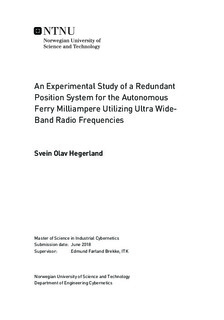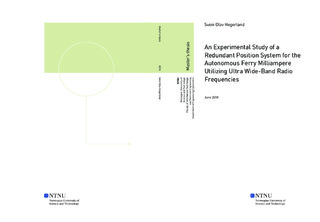| dc.description.abstract | The interest in developing Autonomous Surface Vessels (ASVs) has increased significantly during the last decades, and cutting-edge systems are being developed. The maritime industry is focusing heavily on the research topic, and progress towards the next generation of smart vessels is made every day. Yet, there are still challenges associated with autonomous ships, one being the reliability of the sensors used for guidance.
The Global Navigation Satellite System (GNSS) is commonly used onboard ASVs for this purpose. Although the precision of GNSS is considered to be adequate, the performance is still unreliable if radio signals are blocked, or signal coverage is poor. It is therefore necessary to develop robust methods for redundant positioning, capable of bringing the ASVs safely to dock in case of failing GNSS signals.
Milliampere is an autonomous ferry intended to operate in the narrow channel between Brattøra and Ravnkloa in Trondheim. It is an ongoing project founded by the Norwegian University of Science and Technology (NTNU) and the Centre for Autonomous Marine Operations and Systems (AMOS), and is called the Autoferry Project. The primary navigation system onboard the ferry is utilizing GNSS, and a redundant method for positioning is sought.
This thesis is an experimental study of a redundant position system for the presented ferry. As opposed to GNSS which measures relative distances to satellites, the investigated sensors measure the distances to stationary reference points utilizing Ultra Wide-Band (UWB) radio frequency signals. Evaluating the candidate system concerned of experimental testing of hardware and post-processing of the collected data. Trilateration algorithms were investigated and evaluated concerning precision. The accuracy of the algorithms was also tested when the targeted receive was moving close to the perimeters defined by the reference points, and simulations were used to validate the experimental results. The sensor system was further evaluated concerning compatibility with the existing sensor network onboard Milliampere. A node was implemented in Robot Operating System on a laptop running the same distributions of software as Milliampere. The node published sensor data in real time.
The sensor system was also investigated regarding practical working range, evaluating the feasibility of the suggested location system in the channel. | |

